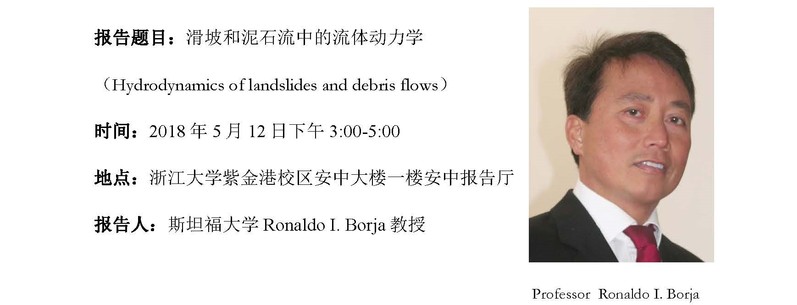
报告简介:
降雨和地震可以从多方面减弱边坡抵抗破坏的能力。对非饱和边坡,降雨增加了土体饱和度,破坏了粒间表面间的连接,当入渗量足够大时,会在土体内形成水流,并在土体上施加顺着坡面向下的拖拽力,降低边坡的稳定性。对饱和、或饱和度较高但未达到100%的边坡,地震作用会导致瞬时孔压上升,土体强度降低。此外,地震产生的惯性力也对土体提出了新的要求,即土体应能抵抗该作用力。本讲座将介绍一个可用于地震或降雨诱发边坡破坏的连续介质物理模型,重点阐述边坡破坏的诱发机理、流体特性,以及随后的岩土体运动特点;此外还将探讨有限元法和光滑粒子流体动力学(SPH)的无网格法在研究诱发滑坡、泥石流等机理方面的潜力。
Introduction to the report:
Rainfall and earthquakes weaken an earth slope in many ways. In partially saturated slopes, rainfall increases the degree of saturation of a soil, thereby breaking the bonds created by surface tension between soil particles. When the volume of infiltrating water is large enough to mobilize fluid flow inside the soil matrix, a downhill frictional drag is exerted by the fluid on the sediment, creating a destabilizing effect on the slope. In fully saturated slopes, or even when the degree of saturation is not exactly 100 percent in the soil, an earthquake could cause momentary pore pressure buildup and reduce the frictional strength of the soil. Furthermore, the inertia load generated by an earthquake creates an additional demand that could test the capacity of the soil to resist failure. In this talk, he will present a physics-based framework for continuum modeling of slope failure induced either by an earthquake or by rainfall. His talk will focus on both the triggering mechanisms leading to slope failure, and the subsequent flow mechanisms characterizing the movement of earth materials at post-triggering. He will also discuss the potential of the finite element method and a meshless method called smoothed particle hydrodynamics (SPH) for capturing the triggering and post-triggering failure mechanisms in earth slopes, including that of debris flows.
报告人简介:
Introduction to the Lecturer:
(本次报告计入学院研究生读书报告考核和评奖评优,请提前15分钟到会场门口签到!)
欢迎广大师生踊跃参加!
浙江大学曾国熙讲座基金会

